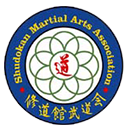A Brief History of the Japanese Sword
By Martin, PaulThis article first appeared in the “SMAA Journal” Volume 20, Issue 3.
Do you have an interest in Japanese swordsmanship?
Is the katana the only Japanese sword you’ve heard of?
Sensei Paul Martin gave us a detailed history of Japanese swords in volume 20, issue 3 of the “SMAA Journal.” Here’s a brief overview from that article:
Jokoto are ancient straight blades with no curvature. They are usually constructed in the hira-zukuri and kiriha-zukuri styles. Hira-zukuri swords have no ridgelines, and they are flat on both sides, whereas the kiriha-zukuri swords have a ridgeline near the blade edge.
It is thought that the shift from straight blades to Japanese swords with curvature happened around the mid to late Heian period (794-1184). This was during the mid-10th century: about the time Taira Masakado and Fujiwara Sumitomo rebelled against the government in the Johei (931-938) and Tengyo (938-947) eras. Blades before these are continental style blades called jokoto, and they were brought to Japan from the Asian continent. Examples of these blades have been excavated from Kofun period tombs, and some still reside in the Shosoin Imperial Repository in Nara.
LATE HEIAN TO EARLY KAMAKURA
From the late Heian period and the early Kamakura period (1185-1333) we can see the Japanese sword as we know it today: shinogi-zukuri (ridgeline) construction, with a wide base, narrowing acutely towards the small point section (ko-kissaki). They are quite slender blades with the curvature concentrated between the handle and base. This shape is called koshi-zori. From midway towards the point there is very little curvature. These blades are usually around 2.5-6 shaku in length (75.8 cm-78.8 cm).
NANBOKUCHO
During the Nanbokucho period (1336-1392) many long blades of three shaku (90.9cm) and other long tachi were made. Tanto of large proportions were also produced. Tachi were majestic, wide, and proportionally long. Among these were some over 90 cm in length and worn over the back. These types of blade are called no-dachi and o-dachi. They were rather thin in construction to decrease the weight. Additionally, many have a bo-hi (groove) cut into the shinogi-ji (ridgeline-sword surface above the temper line) area in order to lighten the blade. Many tachi from this period are o-suriage (shortened in later periods as they were difficult to wield). Consequently, many extant blades from the Nanbokucho period are unsigned.
LATE MUROMACHI
By the late Muromachi period, samurai fighting methods had changed from cavalry to mass infantry style warfare. Uchigatana (fighting katana), worn with the cutting edge uppermost and thrust through the sash, had become popular. After the Onin war, conflicts broke out in many places, and kazu-uchi mono began to appear (mass-produced blades inferior in quality to regular Japanese blades). However, specially ordered blades of excellent quality (chumon-uchi) were also produced at this time. Bizen (Okayama prefecture) and Mino (Gifu prefecture) were the major places of production. Many blades produced in this period are around 2.1 shaku (63.6 cm) in length. They are slightly wider than the standard width, with either a chu-kissaki (medium blade point) or an extended chu-kissaki and strong saki-zori. The nakago (tangs) are short, intended for one-handed use.
MID-EDO
Swords of the Mid-Edo period are of standard width. The saki-haba is relatively narrow when compared to the moto-haba. The curvature is noticeably shallow with a small to medium-sized point section. They are usually around 2.3 shaku (69.7 cm) in length. This particular type of construction was generally produced around the middle of the Kanbun (1661-1673) and Enpo (1673-1681) eras, and is usually referred to as Kanbun shinto.
EDO PERIOD BAKAMATSU ERA
Blades made after the Bunka (1804-1818) and Bunsei (1818-1830) eras are referred to as fukko-shinto (revival swords). Pioneers of the revival movement include Suishinshi Masahide and Nankai Taro Tomotaka. Taikei Naotane was among Masahide’s students. Minamoto Kiyomaro led a revival aimed at Soshu-den (Soshu region) and Mino-Shizu (Shizu district in Mino province) workmanship. Bakumatsu (end of the Tokugawa Shogunate) swords are shallow in curvature, have a wide haba with not much difference in width between the saki and moto-haba, and are around 2.5-6 shaku (75.7cm-78.7 cm) in length, with an o-kissaki and thick blades.
MEIJI ONWARDS
Blades made from the ninth year of Meiji (1868-1912) until present day are referred to as gendaito (modern swords). As of the Hatorei decree in 1876 (banning civilians from wearing swords), the need for swords declined. However, in Meiji 39 (1906), the craft gained imperial patronage. The sword smiths Gassan Sadakazu and Miyamoto Kanenori were appointed Tei Shitsu Gi Gei In (craftsmen by imperial appointment—equivalent to National Living Treasure). Since then, the sword smith’s craft has continued through the Meiji, Taisho (1912-1926), Showa (1926-1989), and Heisei (1989-) eras until today. Today’s sword smiths try to recreate the workmanship of eminent smiths of every period, regardless of whether they are koto, shinto, or shin-shinto. In particular, recreations of tachi of the Kamakura period are a popular aim for many modern sword smiths.
To read more, download volume 20, issue 3 of the “SMAA Journal” in our library.
SMAA is Your 2024 Martial Arts Association
SMAA offers five divisions of authentic Japanese martial arts: aikido, iaido, judo, jujutsu, and karate-do. If you’re looking for a new martial arts association to kickstart the new year, give us a call at (734) 720-0330 or submit a contact form here. We look forward to helping you develop your art!

